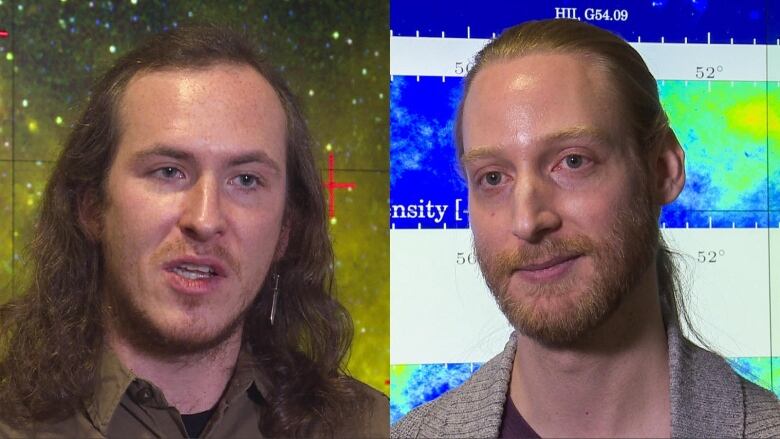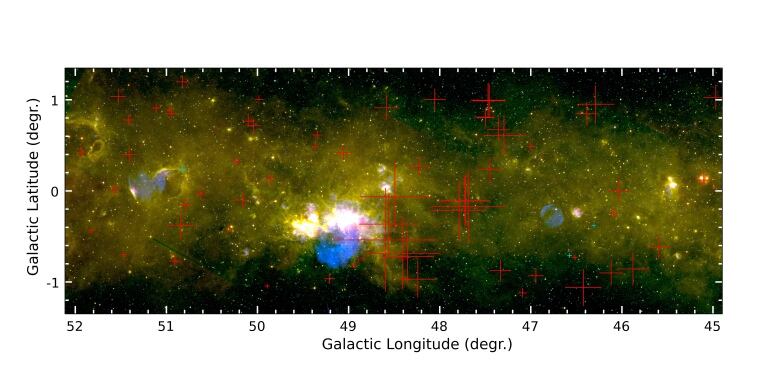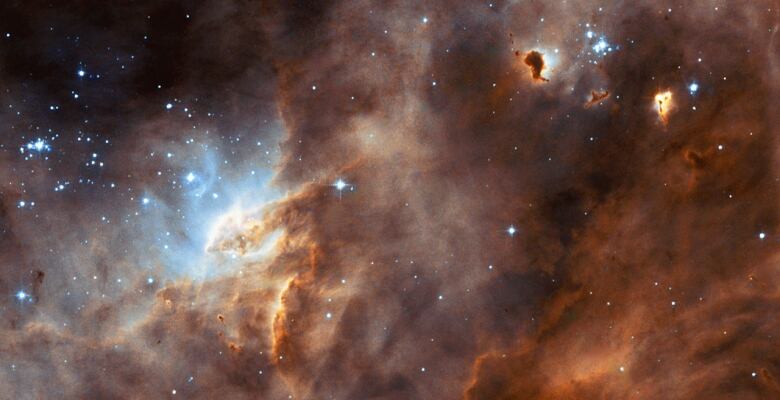Calgary researchers' Milky Way discovery a 'eureka' moment
They initially thought detection of giant magnetic field structure was an error

When Russell Shanahan and Stephen Lemmer first stumbled across the giant magnetic field structure, they thought it was a mistake.
They were analyzing a completely different part of the Milky Way when something in a spiral arm stood out 18,000 light-years from Earth.
"Our first emotion was skepticism because we thought we had done something wrong," Lemmer said.
Shanahan says they were analyzing three-dimensional images the X and the Y of an image plane, and a third plane that displays frequencies. And the frequencies then show waves of magnetic fields interacting with plasma.
And in one corner of the galaxy, he says, they were picking up frequency signatures that were off the charts.
"We're theorizing that this compression of gas and this increasing magnetic field is going to be the initial processes to actually causing this gas and this dust to collapse and start forming stars," Shanahan said.

Lemmer was an undergrad at the time of the discovery. He's since graduated. It's been an exciting project for him to be a part of especially having his name on a published research paper.
"Our discovery has implications for the magnetic field structure of the galaxy as well as for a star formation in the galaxy," Lemmer said. "With stars come planets and the potential for life and all of that. So we've got implications for a wide, wide variety of scientific research to come."
When the team brought their discovery to Dr. Jeroen Stil, he decided that they needed to shift the focus of their research and concentrateon this discovery.

"This discovery was made in Calgary," Stil said. "We shared it with our colleagues once we knew what was going on."
The faculty of science students have been collaborating with the international THOR project, which is an updated and complete survey of interstellar gas in the Milky Way.
THOR had access to the Very Large Array 28 radio telescopes that were recently upgraded. This gave researchers at the U of C access to data that is much more detailed and rich than the last survey, done in the 1980s.
Every researcher dreams of getting a eureka moment.- Dr. Jeroen Stil
Stil says this kind of research wasn't possible before, because it's outside of the scope for older telescopes.
"Every researcher dreams of getting a eureka moment, because that's not always what research is about," Stil said. "Being able to take the students right in the middle of that is amazing."
But this discovery is just the beginning. Students were only getting started on the reams of data provided through the THOR project, and there could be more breakthroughs on the horizon.












_(720p).jpg)


 OFFICIAL HD MUSIC VIDEO.jpg)
.jpg)



























































































